West India's Famous Temples
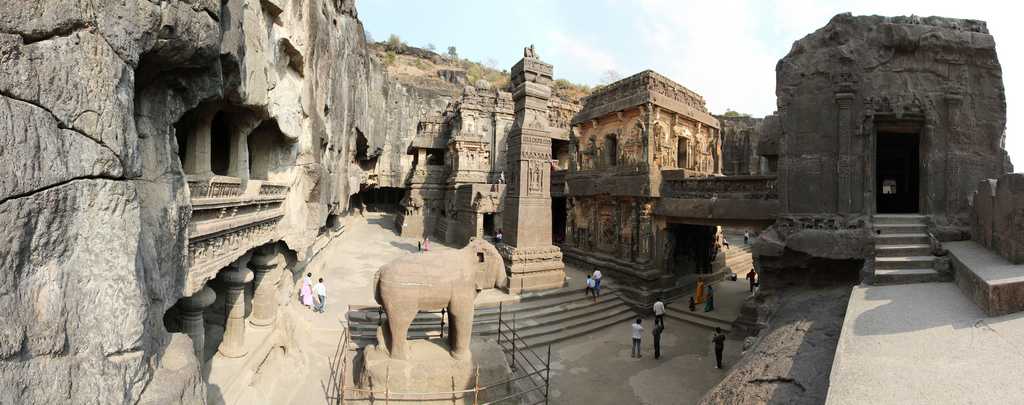
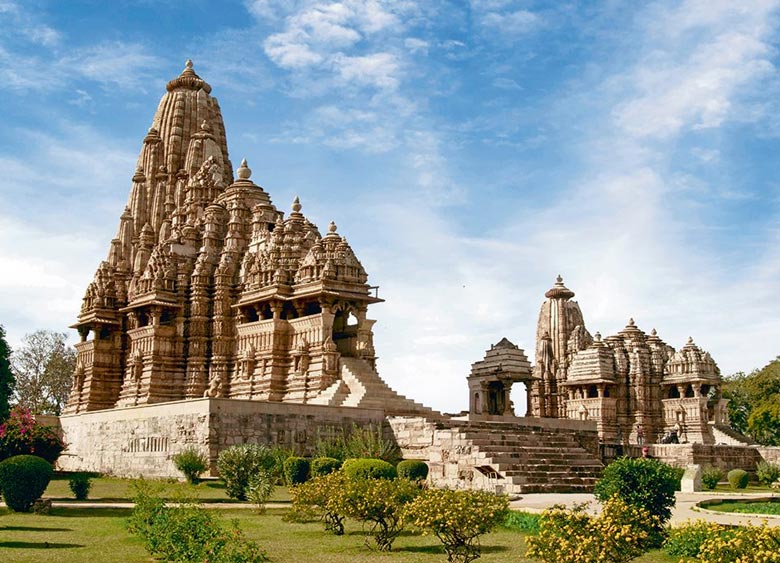
Nestled across its vibrant states, West India’s Famous Temples form a diverse tapestry of spiritual experiences. From awe-inspiring structures carved out of solid rock cliffs to majestic edifices overlooking the Arabian Sea, these sacred sites showcase a profound blend of devotion, history, and architectural genius. More than just places of worship, they stand as monumental testaments to the artistry and deep-seated faith that have flourished in the region for centuries, inviting pilgrims and travelers alike to explore their timeless legacy.
Wiki Link: Best Temples to Visit in West India.
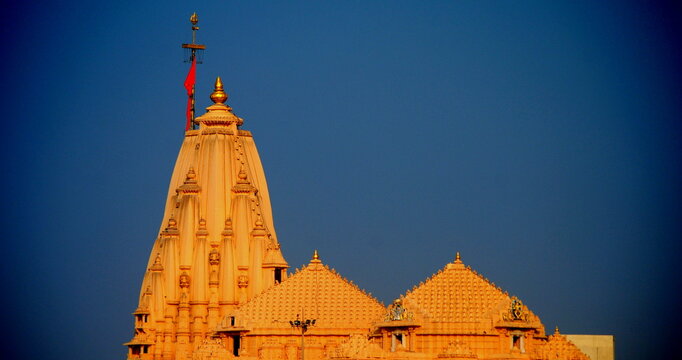
Somnath Temple
The Eternal Shrine of Lord Shiva
Era: Reconstructed multiple times; current structure completed in 1951
Patron: The Government of India (latest reconstruction)
Location: Veraval, Gujarat
One of the twelve Jyotirlingas, Somnath Temple is a symbol of resilience and eternal faith. Situated on the western coast, it is believed to be the first among the Jyotirlingas. The temple has been destroyed and rebuilt several times throughout history, with its current form standing as a majestic white structure against the backdrop of the Arabian Sea. The evening aarti, with the sound of waves and conch shells, creates a profoundly spiritual atmosphere.
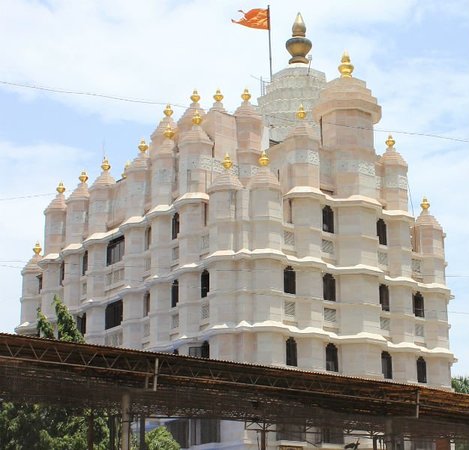
Shree Siddhivinayak Temple
The Wish-Fulfilling Lord Ganesha
Era: 1801
Patron: Laxman Vithu and Deubai Patil
Location: Mumbai, Maharashtra
One of India’s richest and most visited temples, the Siddhivinayak Temple is dedicated to Lord Ganesha. The black stone idol, with its trunk curled to the right, is considered particularly auspicious. Devotees from all walks of life, including celebrities, flock here to seek blessings for success and the removal of obstacles. The temple’s golden spire and intricate woodwork in the sanctum radiate a powerful, concentrated energy.
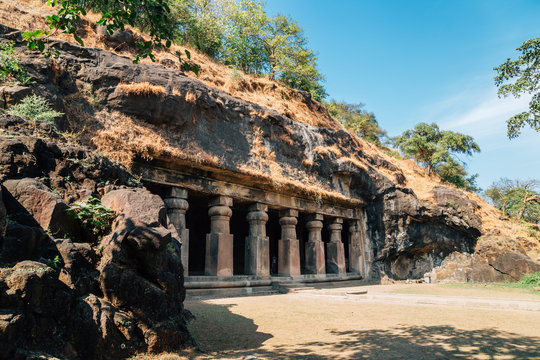
Elephanta Caves
The Abode of Cave Shiva
A short ferry ride from Mumbai lies the Elephanta Caves, a collection of rock-cut cave temples dedicated to Lord Shiva. A UNESCO World Heritage Site, it is famed for its magnificent sculptures and relief panels. The main attraction is the massive Trimurti Sadashiva, a 20-foot tall three-headed sculpture representing Shiva as the creator, preserver, and destroyer. The artistic achievement here is a profound spiritual and historical experience.
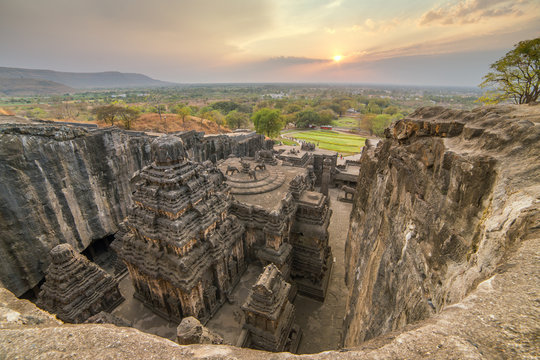
Ellora Caves - Kailasa Temple (Cave 16)
The Mountain Carved into a Temple
The Kailasa Temple is the crowning glory of the Ellora Caves and a UNESCO World Heritage Site. It is the world’s largest monolithic structure, carved vertically downward from a single basaltic rock cliff to represent Mount Kailash, the abode of Lord Shiva. The sheer scale, intricate carvings depicting Hindu epics, and the architectural audacity make it one of the most awe-inspiring temple complexes on Earth.
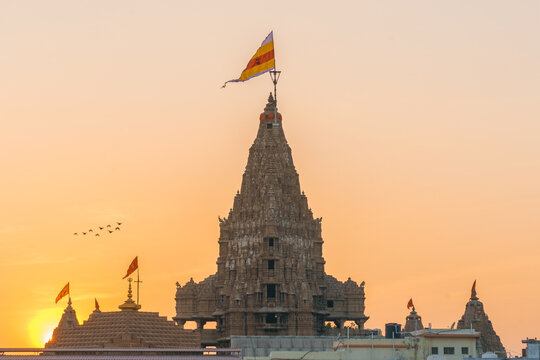
Dwarkadhish Temple
The Heavenly Kingdom of Lord Krishna
Era: 15th–16th Century (current structure)
Patron: Raja Jagat Singh Rathore
Location: Dwarka, Gujarat
Believed to be the ancient kingdom of Lord Krishna, Dwarkadhish Temple is one of the four sacred Char Dham pilgrimage sites. Located at the confluence of the Gomti River and the Arabian Sea, its five-story main shrine, supported by 72 pillars, is a stunning example of Chalukyan architecture. The flag hoisted above the temple, changed five times a day, symbolizes Krishna’s celestial presence.
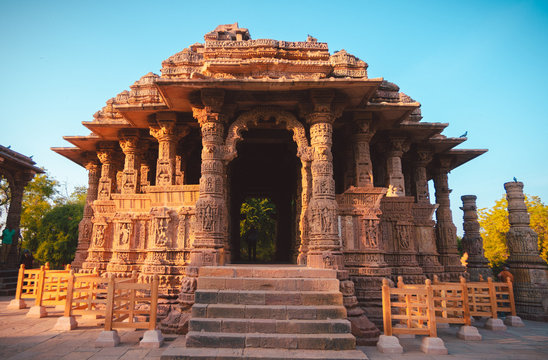
Sun Temple, Modhera
A Tribute to the Sun God
Though no longer used for active worship, the Sun Temple at Modhera is a UNESCO World Heritage Site and an architectural masterpiece. The temple is designed so that the first rays of the rising sun on the equinoxes would illuminate the image of the Sun God in the inner sanctum. Its grand pillared hall (Sabha Mandapa), intricately carved with scenes from the Ramayana and Mahabharata, and the colossal stepped tank (Surya Kund) are breathtaking.
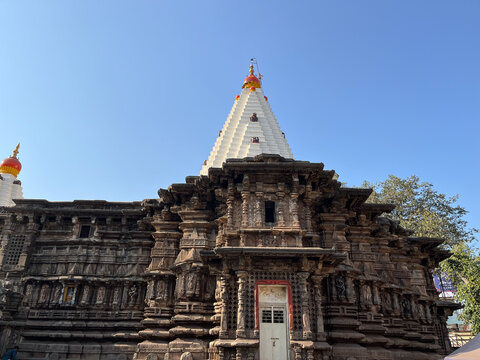
Mahalaxmi Temple, Kolhapur
The Supreme Mother Goddess
Era: 7th Century CE
Patron: The Chalukya Dynasty
Location: Kolhapur, Maharashtra
One of the 18 Maha Shakti Peethas, the Mahalaxmi Temple in Kolhapur is a powerful center of Shakti worship. It is believed that the left eye of Goddess Sati fell here. The 40-kilogram gem-studded crown of the goddess and the unique practice of sunlight falling directly on the deity’s feet for a few days each year are major attractions. The temple’s Hemadpanthi architecture adds to its historic grandeur.
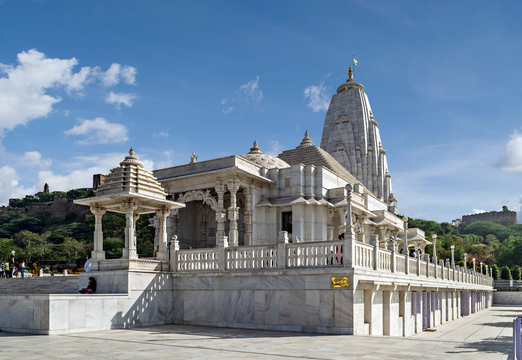
Birla Mandir (Laxmi Narayan Temple)
A Modern Marble Marvel
Era: 1988
Patron: The Birla Family
Location: Jaipur, Rajasthan
Constructed with pristine white marble, the Birla Mandir is a relatively new temple that stands out for its stunning modern architecture and intricate carvings. Dedicated to Lord Vishnu and Goddess Lakshmi, the temple complex is adorned with beautiful stained glass windows depicting Hindu legends and quotes from the Gita and Upanishads. Its brilliantly lit structure against the night sky is a magnificent sight.
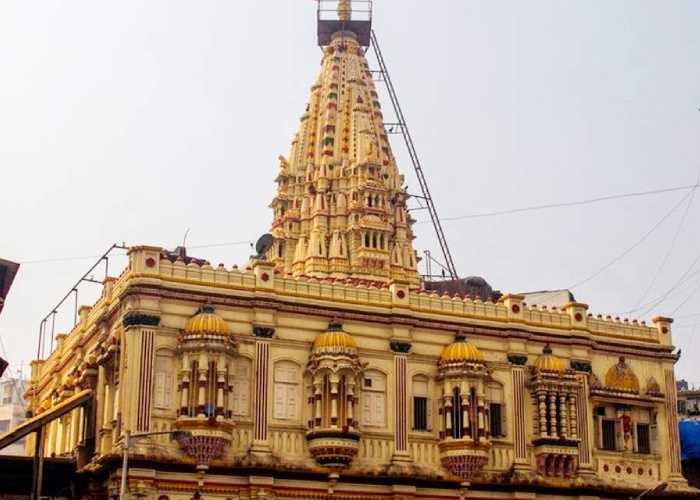
Mumba Devi Temple
The Patron Goddess of Mumbai
Era: 18th Century (original structure)
Patron: Local fishermen and communities
Location: Mumbai, Maharashtra
Dedicated to Mumba Aai, the Mother Goddess and the city’s namesake, this temple is of immense historical and cultural significance to Mumbai. The original idol of the goddess, made from a single piece of rock, is housed here. It was the kuladevi (family deity) of the city’s original inhabitants, the Koli fishermen, and remains a vital spiritual center amidst the bustling markets of South Mumbai.
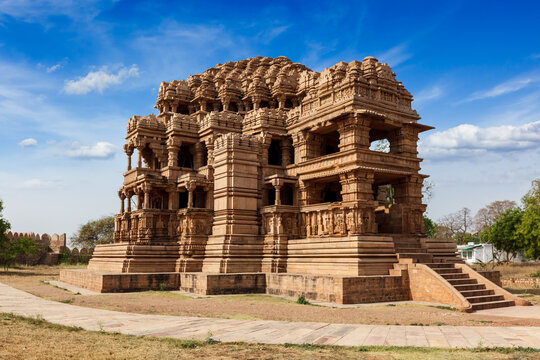
Saas Bahu Temple
The Temple of Intricate Carvings
Era: 9th–10th Century CE
Patron: The Gurjara-Pratihara Dynasty
Location: Nagda, Rajasthan
Contrary to its popular name (“Mother-in-Law, Daughter-in-Law” Temple), it is a corruption of “Sahastrabahu,” meaning Lord Vishnu with a thousand arms. These twin temples dedicated to Vishnu and Shiva are renowned for their exquisitely detailed and ornate carvings covering every inch of the walls, pillars, and ceilings. The craftsmanship depicts scenes from Hindu mythology with incredible precision and artistry.
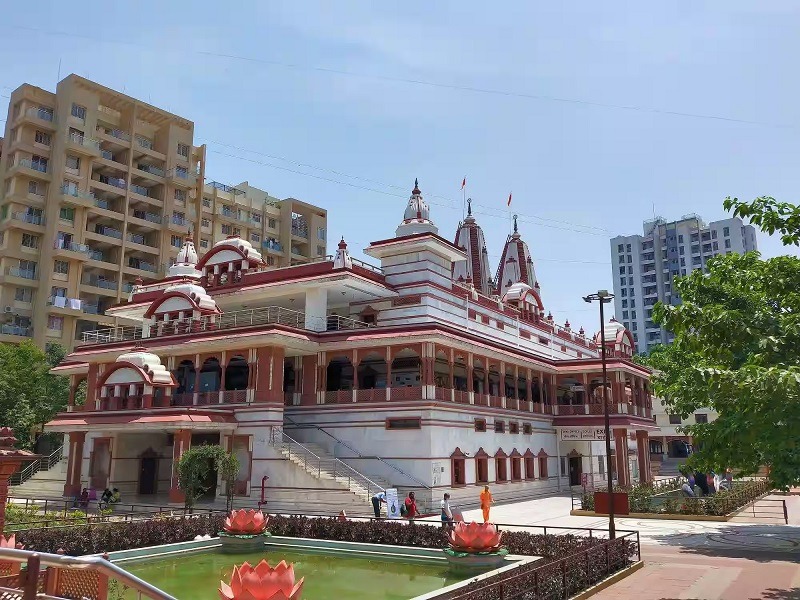
ISKCON Temple, Pune
A Hub of Spiritual Knowledge
Era: 2018 (new complex)
Patron: International Society for Krishna Consciousness (ISKCON)
Location: Pune, Maharashtra
One of the largest ISKCON temples in the country, this grand complex is a center for Vedic culture and spiritual learning. The temple features a 3,500-seat hall, a robotic diorama showcasing the pastimes of Lord Krishna, and a 7-foot murti of Chaitanya Mahaprabhu. It is not just a place of worship but a dynamic space for philosophy, education, and community service.
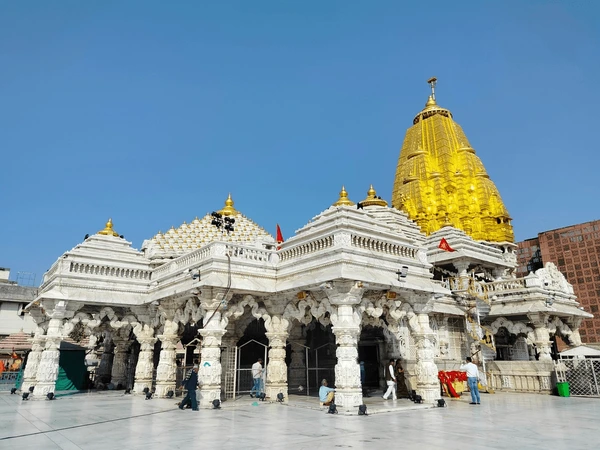
Ambaji Temple
The Adoration of the Mother Goddess
Era: Ancient; mentioned in ancient texts
Patron: Local rulers and devotees
Location: Banaskantha district, Gujarat
A principal Shakti Peeth, the Ambaji Temple is one of the 51 Shakti Peethas where the heart of Goddess Sati is believed to have fallen. Unlike most temples, it does not have an idol; instead, the deity is worshipped in the form of a sacred geometric diagram, the “Shri Yantra.” The temple attracts millions of pilgrims, especially during the Bhadarvi Poonam fair.
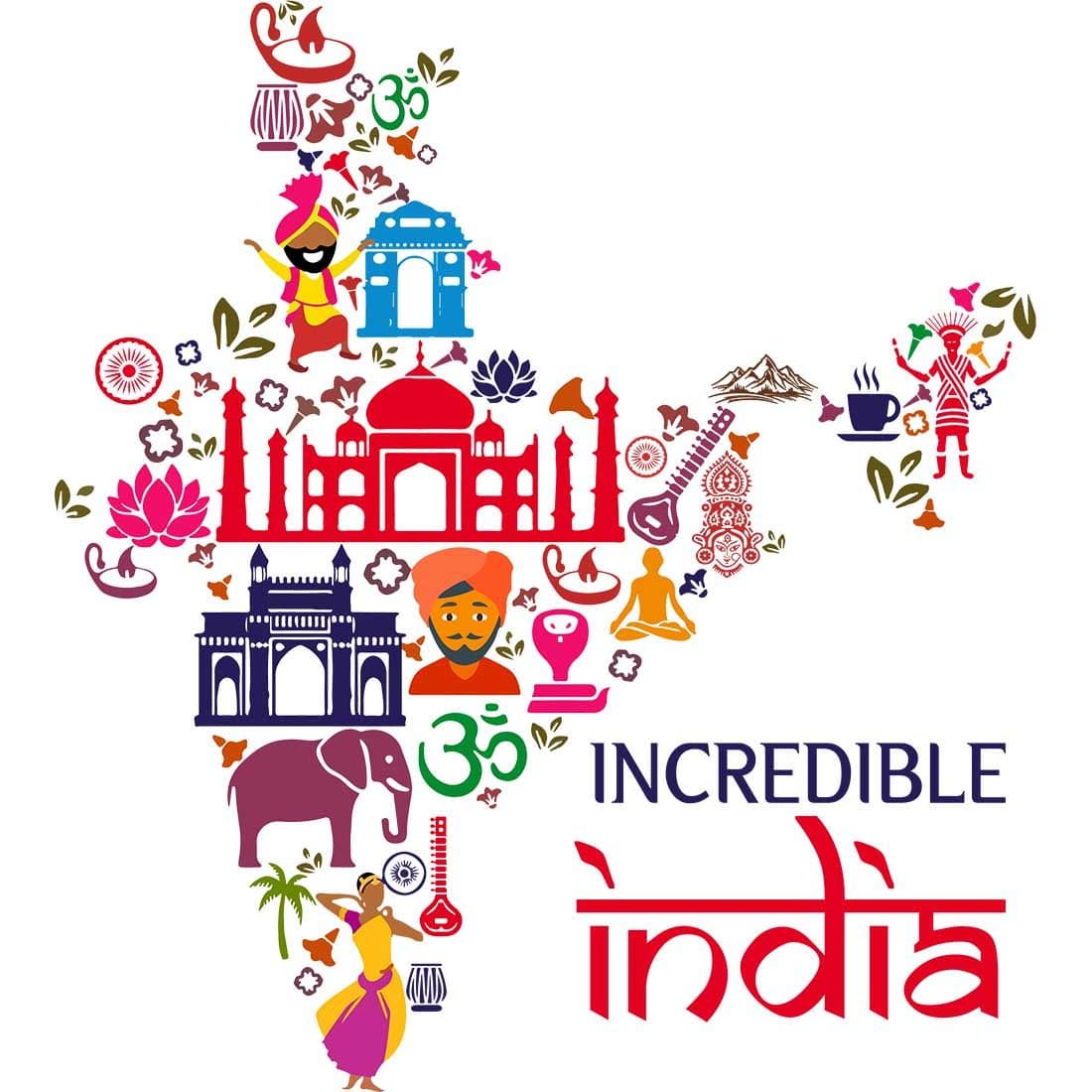
West India's Famous Temples
- West India Temple Guide
- Places to Visit in West India for Pilgrimage
- India’s Most Sacred Temples in the West
- Architectural Wonders of West Indian Temples
